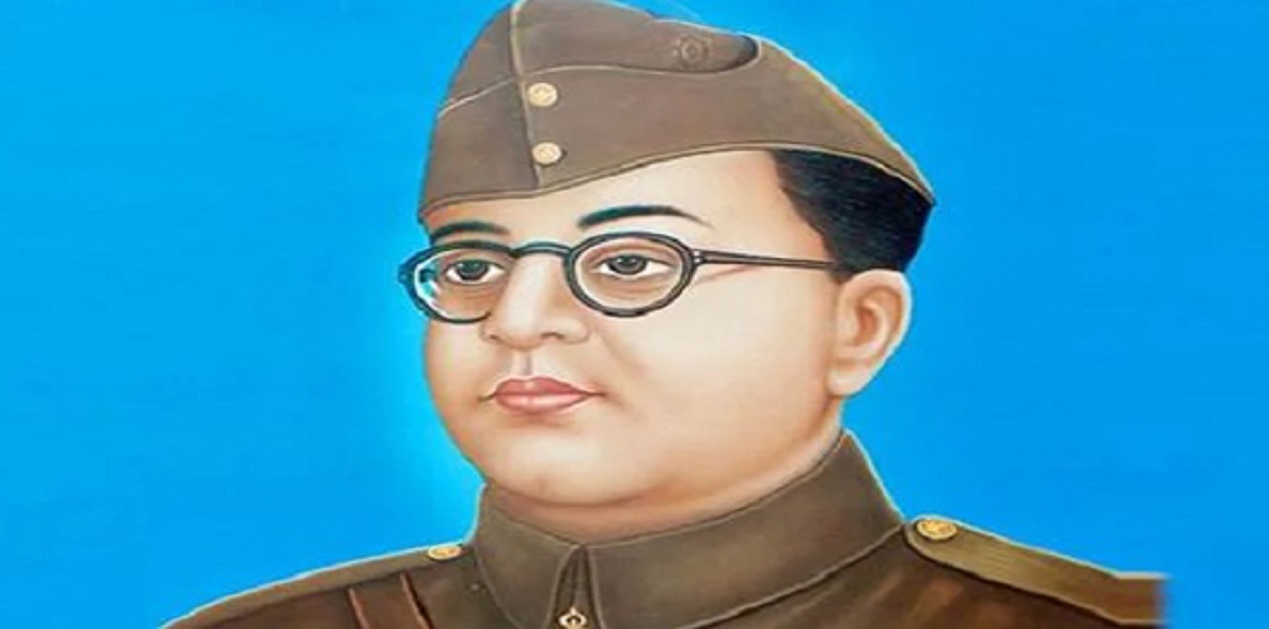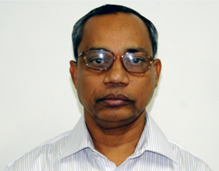At a time when India is commemorating the 125th birth anniversary of the indomitable Netaji Subash Chandra Bose, and his disappearance and passing away is still shrouded in mystery, it is worth a while to revisit a seminal work, Verdict from Formosa: Gallant End of Netaji Subhas Chandra Bose, authored by Harin Shah, a veteran journalist who visited Taiwan, then called Formosa, in 1946; one year after the tragic air crash in which Netaji was believed to have died. The book was published in 1956, and this article is based on the aforesaid book, which the author claims is “the eye witness account from the crash to cremation collected on the spot in Formosa.” Shah writes in his book that he was “the only Indian having had the good fortune to visit Formosa after the end of the war” and “the bearer of conclusive eye-witness collected in Formosa, checked with Netaji’s co-victim in the air-crash Col. Habibur Rehman and upheld by leaders like Sardar Vallabbhai Patel” and opines that “Netaji Subhash Chandra Bose embraced heroic martyrdom at Taipei”.1
Although a number of books have been written about the mystery surrounding the disappearance and passing away of Netaji and also a number on enquiry commissions appointed by the government have submitted their reports, Shah’s book is arguably the earliest one based on interviews with informed and knowledgeable people in Taiwan then called Formosa. The book clearly suggests how Netaji was held in high esteem by the Taiwanese people.
The author takes the readers on detour of the hoary era of Asian resurgence during and after Second World War when peers of Netaji like Chiang Kai-shek, Aung San and Dr Sukarno dominated the emerging Asian firmament. He makes a reference to the ‘United Front’ tactics in China when the Kuo-min-tang (KMT) Party under the leadership of Chiang Kai-shek and the Communist Party of China forged an allianceto liberate China from warlords and at the same time both KMT and the Communist Party of China were competing to come to power in China. The world history would have been an entirely different had the KMT succeeded in preventing the Communist Party of China in forming the government in China. The inapt handling and misreading of the ground situation by the US also contributed in the failure of the KMT to assume power in China.
Harin Shah was at Nanking in early 1946, the head-quarter of the KMT regime in China heading the Free Press of India News Service launched by Sadanand. From there, he flew to Taipei via Shanghai along with a battery of foreign correspondents and arrived in Taipei on 30th August 1946. As unravelling the mystery of Netaji’s disappearance was his main objective, he talked to a cross section of the people about this immediately after his arrival in Formosa. He was pleasantly surprised that the first question they shot at him was about “Chand la Bose”, who they added voluntarily that they knew he had died in Taipei.2 He talked to a cross section of intelligentsia in Taipei who were knowledgeable about Netaji. He writes the enquiry about the reaction of Indian people to the heroic deeds of Netaji and his final martyrdom by Formosan newspapermen soon after he set his foot on Formosan soil was disarming. He was gratified to find that some of the Formosan newspapers friends had genuinely undertaken to piece together available evidence about Netaji’s death in the Taipei plane-crash. He visited the Taiwan Railway Hotel, where Netaji had stayed. He also met the Huang Chao-chin, the Speaker of the provincial Assembly of Formosa who gave him extremely useful guidance in reaching the links in the story.3
Shah discussed the issue with as many people as possible while in Taiwan, then called Formosa. An important personality whom he met in Formosa and who threw light on Netaji’s life and times in Formosa was Prof. K.S. Wei of Taipeh University. Culling out from the noting in his diary after meeting Prof. Wei, Shah writes in his book attributing to the former,”… he died in August 1945… News published in Formosa papers... But no photos…He came by a bomber. Bomber was taking off. Gasoline tank leaked. He died in Japanese hospital…He was very brave. I was not in Taihoku at the time of his death. Whenever any accident occurred at the airport, Japanese used to cordon off. So probably, no eye-witness except Japanese military officers... I shall ask my friends to find out more…”4
Professor Wei meant his words and sent across a book written in Japanese through Ms. Noliko, the hotel attendant for Mr Shah’s room. The Professor’s covering letter, scribbled on the blank back page of the Contents in the book, said,” …please find page 107 of this book. Mention is made of his death. That will give you some information. Yesterday, I called on a Japanese Professor of Taipeh University, who was with the Japanese Military Headquarters as an interpreter when Bose’s death was made known. The exact date was August 1945, 19th at 1.30a.m.” The name of the Japanese book was 20 years of Pacific Hurricane. It mentioned the death through air-crash at Taipeh.5
Yet one more inference that Mr. Shah drew was from Dr. Lee wan-chu, who was the editor of the Chinese-language newspaper Shin Sheng JirPao, published from Taipeh. Dr Lee wan-chu was also the Deputy Chairman of the Provincial Assembly of Formosa. Dr Lee personally went through the files in his office of the closed –down Japanese newspaper Taiwan NichiNichi Shimbun, published from Taipeh and found the 22nd August, 1945 issue of the then newspaper carrying an official press note on Netaji’s death through plane-crash at Taipeh. Dr Lee gave a copy of the original Japanese newspaper carrying the news. It said, “A press-note issued at 2 p.m. on 22nd inst. (August 1945) by the Intelligence Bureau of the Japanese Garrison Commander, Taihoku (Taipeh), states that Chandra Bose, Leader of the Provisional Government of Free India set out on a plane from Singapore on 16th August en-route Tokyo. He was proceeding to Tokyo to discuss with the Imperial Government. At 14 hours on 18th, the plane met with an accident in the vicinity of Taihoku airfield and Chandra Bose was heavily wounded.6
The news further said, “Although he was given treatment at the Tunti (Chinese word meaning ‘South Gate’ Military Hospital), it proved of no avail, and he passed away on 19th August at zero hour.” Mr Shah visited the South Gate Military Hospital which was under Japanese control at the time of air-crash. With the cooperation of the Chinese Head of the Hospital Col. Wu Kuo Hsing, Shah could meet sister Tsan Pi Sha who was working with the military hospital from the Japanese time. She dropped a bombshell, to quote the author, when she said, “He (Netaji) died here. I was by his side”.7 She further told Shah that Netaji had received injuries from burning. He was burnt as a result of the air crash which took place at the Taioku airport just before he was brought to the hospital. It was about the noon time on August 18th, 1945 that he was brought to the Hospital. He was very severely burnt. He died the same night at 11, she added. Shah also met Japanese people and ascertained vital facts. One such person whom Shah interviewed was Dr. Kunio Kawaishi, the then Professor of Surgery at the University Hospital in Taipeh. When Netaji arrived on his last trip to Formosa, Dr. Kunio was the Director of the University Hospital. Dr Kunio believed that Netaji probably died at the airport itself; so serious was the burning injury.8
The book has so many startling revelations which only an authentic and objective investigation can confirm or contradict or one does not know if the mystery of Netaji’s death will remain a best kept secret.
Endnotes
- Harin Shah, Verdict from Formosa: Gallant end of Netaji Subhash Chandra Bose,( Atma Ram &Sons, Delhi),
- Ibid, p.22
- Ibid,p.26
- Ibid, p.37
- Ibid, p.38
- Ibid, p.50
- Ibid,p.56
- Ibid, p.77
(The paper is the author’s individual scholastic articulation. The author certifies that the article/paper is original in content, unpublished and it has not been submitted for publication/web upload elsewhere, and that the facts and figures quoted are duly referenced, as needed, and are believed to be correct). (The paper does not necessarily represent the organisational stance... More >>
Image Source: https://lawzmag.com/wp-content/uploads/2015/10/Netaji-Subhas-Chandra-Bose.jpg











Post new comment